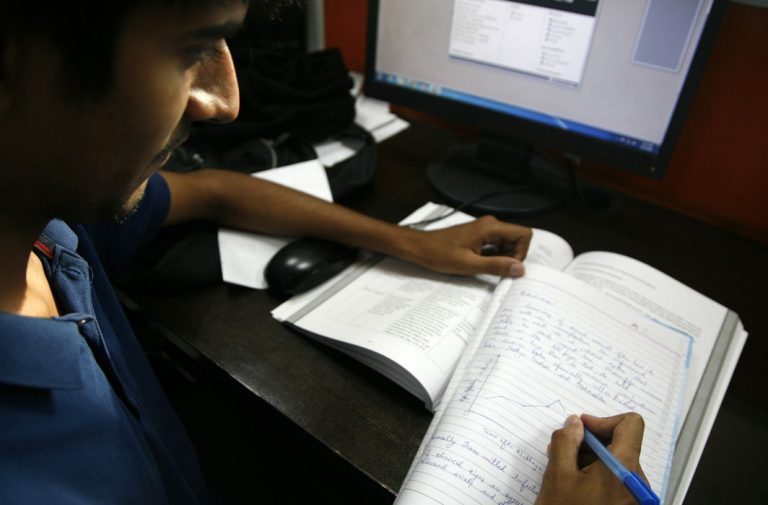
~By Meha Mathur
In the otherwise vitiated atmosphere in higher education, there is almost uniform response to the new regulations on plagiarism approved by the University Grants Commission, wherein research scholars and faculty will be penalised for the wrongdoing. “A welcome move” was the standard response of all those India Legal spoke to. The need for curtailing the rampant practice of copying from other sources or authors without giving them due credit is keenly felt in academia. It brings disrepute to academia and also obstructs research culture. If you are copying from existing texts, what is the value addition you are doing, which should be your primary role!
Among the objectives of the University Grants Commission (Promotion of Academic Integrity and Prevention of Plagiarism in Higher Educational Institutions) Regulations, 2018, is: to create awareness about responsible conduct of research, thesis, dissertation, promotion of academic integrity and prevention of misconduct including plagiarism in academic writing among student, faculty, researcher and staff.
The regulation provides for a detailed mechanism to deal with plagiarism in higher education institutes, including technology to be availed of, the monitoring committee, and punishment in case of wrong-doing. The highlight of the Regulation is provision for graded punishment depending upon the level of copying. (See box)
Prof Simi Malhotra, English faculty and Director of the Centre of North East Studies and Policy Research at Jamia Millia Islamia, says penalisation will act as a deterrent. The faculty, especially, are supposed to set an example for the students. There are high expectations from people at the top end of the knowledge economy. While admitting that some ideas will be borrowed as “we are not inventing the wheel”, she emphasises, “if you are borrowing an idea, you have to acknowledge that.”
Shikha Jhingan, Associate Professor at the School of Arts and Aesthetics at Jawaharlal Nehru University, says: “Definitely, plagiarism needs to be controlled”, though she adds caution. “How will they implement the rule is a tricky area. It should not become another area of subjective use.” Her worry is that it might become another tool to influence promotions or increments.
She suggests that there should be more workshops among students and teachers for better understanding of citation rules. (In fact, the Regulations also provides for sensitisation seminars/ awareness programmes on responsible conduct of research, thesis, dissertation, promotion of academic integrity and ethics in education for students, faculty, researcher and staff.) Also, she warns against complete reliance on technology in identifying level of copying.
Dr. Vishakha Kutumbale, who teaches at the School of Economics, Devi Ahilya Vishwavidyalaya, Indore, also worries that people will find ways to circumvent technology too. She suggests making use of only the software authenticated by the UGC.
The bigger question is, how can students who are firmly entrenched in a system of cramming for success in exams be expected to switch over to new ways of learning? Right since childhood, verbatim copying from textbooks is the mantra for success. Children fear that not parroting NCERT books will not fetch them the required marks for college admission, and once in college, students are just not tuned in to come up with original writing in tutorials.
Malhotra says that when parents take out print-outs for their children’s homework, or do their ward’s project, or when they hire professional help to complete holiday projects, no one raises ethical issues. Teachers also encourage the practice because, in the end, marks do matter.
Development consultant Ritu Mathur, earlier associated with UNDP, recounts the experience of her daughter when she was in Class VIII a few years ago. She came up with a well-reasoned and original essay on the causes of the 1857 revolt, but the teacher brutally struck off the entire answer in red ink. Mathur says with equanimity: “I know where the teacher’s reaction came from. They are under pressure to produce results in Boards, and unless they start training students to reproduce textbook language with properly highlighted points, how will the students learn answer-writing skills?”
But in the process, creativity and originality is put on the back burner and one is lucky if one can keep the creative flame alive. The motto is: when in school, do as teachers tell you. Ultimately, it becomes a matter of how well you can reproduce, and underline, textbook matter.
An added problem is increasing emphasis on shorter, one-word answers or fill-in-the-blanks, to democratise education. A medical faculty at a premier hospital told this author that given court cases and stays on admissions, it helps to keep the answers objective as subjective answers would be more prone to questioning. But the result is that when these students take up PhDs, the standard of their theses is abysmally low.
Dr Kutumble, however, has a different perspective on this debate. She does not find fault with the school education system, and says that unless students are well-versed with what masters of a given discipline have said, what do they express? She says the American education gives a lot of emphasis on expressing yourself. But thoroughness with theory comes with cramming. By post-graduation you are equipped with the tools of various disciplines, and are in a position to come up with your views. She adds: “Indians are rich in fundamentals. I have never seen them in unwelcome situations. Communication skills might be a problem but that can be overcome.”
The issue here is the need for awareness among students that what they are doing is copying, and the implications of it. Ignorance can’t be an excuse. After all, no one would want to share the fate of Kaavya Viswanathan, who got so inspired by several other authors’ novels and “internalised” them (in her own words) to such an extent that she unconsciously ended up plagiarising the works in her own debut novel, How Opal Mehta Got Kissed, Got Wild, and Got a Life.


